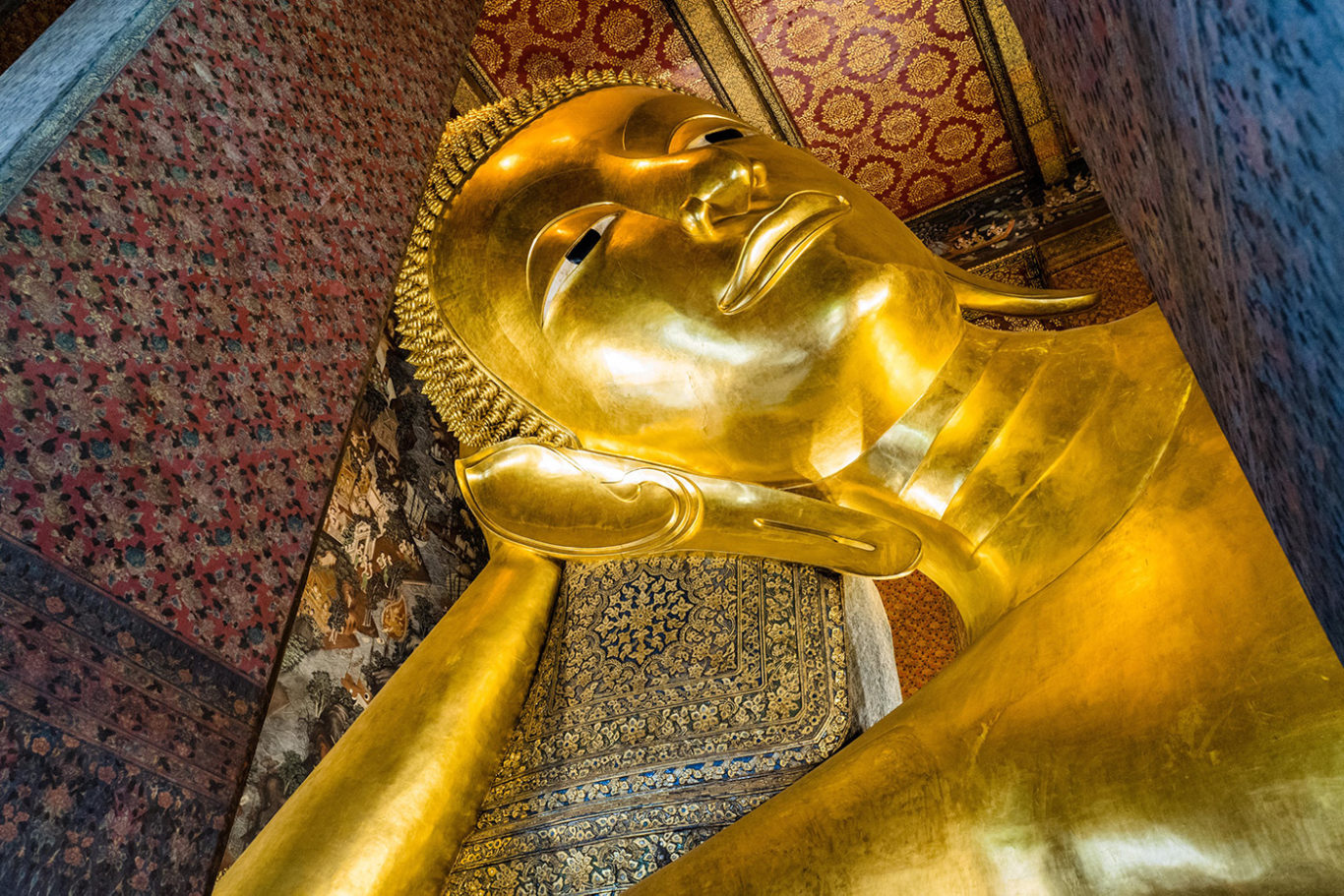What is Theravada Buddhism?

A giant reclining Buddha statue at a Theravada temple in Bangkok, Thailand represents the Buddha’s parinirvana, or death and release from samsara. | Rolf_52 / Alamy Stock Photo
Of the sects that arose after the Buddha’s death, what we now call Theravada, the “way of the elders,” is the sole surviving strand. As the oldest of the three main Buddhist traditions, it is the one most closely associated with the teachings of the historical Buddha. The school is rooted in the Tipitaka (Sanskrit, Tripitaka), “the three baskets,” three collections of texts. Collected in the Tipitaka are some of the earliest known Buddhist texts: the Suttas (Sanskrit, sutras), accounts of hundreds of oral teachings given by the Buddha and his senior disciples; the Vinaya, rules of the monastic order; and the Abhidhamma (Sanskrit, Abhidharma), later scholarly commentaries on the teachings. Together they form the Pali canon, a collection of foundational texts that comprise the doctrinal basis of Theravada.
Theravada rests on core Buddhist teachings including the four noble truths and eightfold path to enlightenment, the three jewels (Buddha, dharma, and sangha), and concepts such as impermanence, non-self, karma, rebirth, and dependent origination (the co-arising of phenomena), along with ethical precepts and the meditation practices of samatha (calm abiding) and vipassana (insight).
Although the Buddha set out ethical guidelines for lay practitioners, Theravada is essentially a monastic tradition, emphasizing vows of renunciation and self-purification. For the Theravadin, the spiritual ideal is the arahant (Sanskrit, arhat), or “accomplished one,” who through solitary effort attains nirvana—liberation from the suffering of cyclic existence that marks samsara, or worldly life. In classical Theravada, a layperson can reach the first three levels of attainment on the path to enlightenment. But the disciplined life of a monastic was deemed essential to reach the fourth and highest level—an arahant like the Buddha, whose “final nirvana” experienced at his death freed him from rebirth.
Theravada has sometimes been called “Southern Buddhism”: from its origins in northern India, it fanned out across southern Asia and today remains the predominant form of Buddhism practiced in Sri Lanka, Myanmar (Burma), Thailand, Cambodia, and Laos, and it is also practiced in Europe, the Americas, and beyond.

Tricycle is more than a magazine
Gain access to the best in sprititual film, our growing collection of e-books, and monthly talks, plus our 25-year archive
Subscribe now